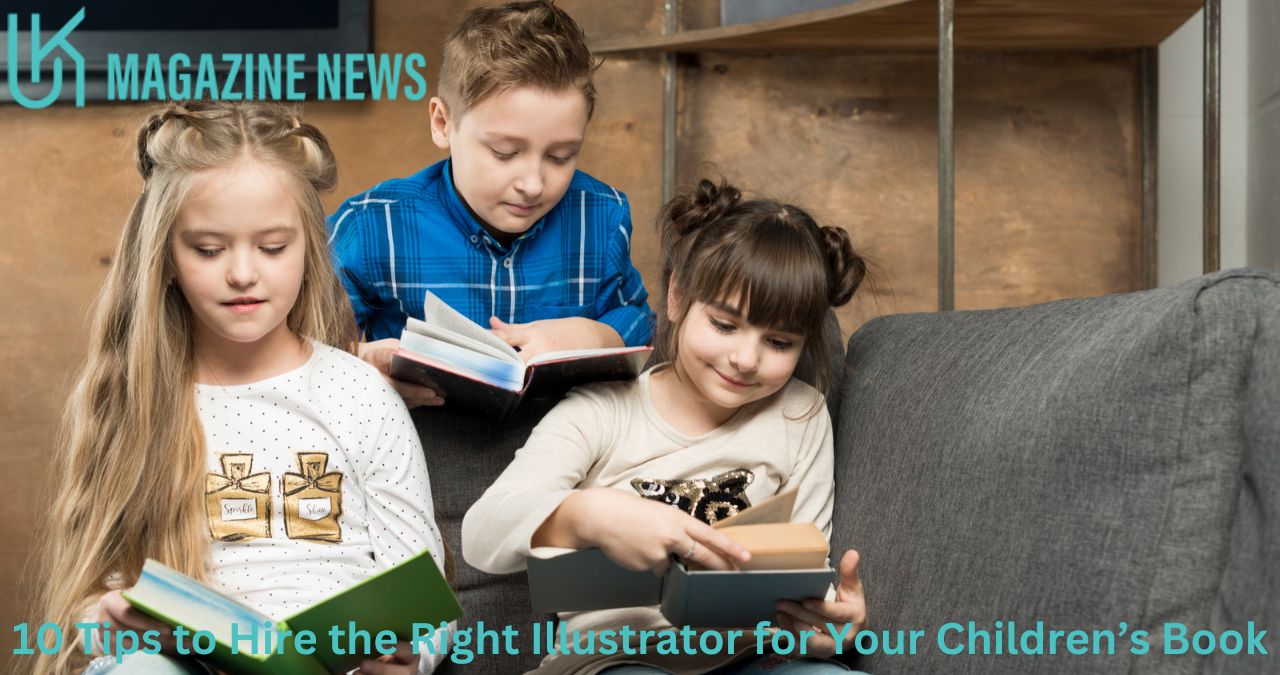Choosing the right illustrator for your children’s book is a decision that can significantly influence the success of your project. This is because illustrations play an important role in capturing the imagination of young readers and bringing your story to life.
To ensure your book is visually appealing and aligns with your vision, it’s important to select an illustrator who understands your needs and can deliver high-quality artwork. Here are ten tips to help you do just that.
1. Define Your Vision and Style
Before beginning your search for an illustrator, it’s important to have a clear vision of the style and tone you want for your book. Consider the age group of your target audience and the mood of your story.
Are you looking for whimsical, colorful illustrations for a picture book, or something more detailed and subdued for a middle-grade novel?
Create a mood board or a detailed brief that outlines your preferences, including color schemes, character designs, and overall artistic style. Having a well-defined vision will help you communicate your needs clearly and hire a children’s book illustrator whose work aligns with your concept. This clarity ensures that both you and the illustrator have a shared understanding of the project from the outset.
2. Research Illustrators Thoroughly
Take the time to research potential illustrators thoroughly. Look for portfolios and samples of their previous work to assess their style, quality, and versatility. Many illustrators have websites or social media profiles showcasing their portfolios, which can give you a sense of their range and expertise.
Pay attention to the details in their illustrations, such as character expressions, backgrounds, and how they convey emotions and actions. Make sure their work aligns with the vision you have for your book. Additionally, check for any client testimonials or reviews that might provide insight into their professionalism and work ethic.
3. Review Previous Work and Experience
Examine the illustrator’s previous projects to see if they have experience with children’s books and if their style is appropriate for your story. Look for books they have illustrated and assess how their illustrations complement the text and engage young readers.
Consider their experience working with authors and their familiarity with the publishing process. An illustrator with experience in children’s literature will likely understand the specific requirements of book illustrations, such as page layout, text integration, and how to appeal to young readers.
4. Evaluate Their Communication Skills
Effective communication is essential for a successful collaboration with an illustrator. Choose someone who is responsive, open to feedback, and willing to discuss your ideas and preferences. Good communication ensures that you can work together efficiently and address any concerns or adjustments throughout the process.
During your initial interactions, assess how well the illustrator listens to your ideas and how clearly they articulate their thoughts. A collaborative approach will help ensure that the final illustrations match your vision and meet the project’s needs.
5. Discuss Your Budget and Payment Terms
Before hiring an illustrator, discuss your budget and payment terms to avoid any misunderstandings. Illustrators have varying rates based on their experience, style, and the complexity of the project. Be clear about your budget and ensure that it aligns with the illustrator’s fees.
Discuss payment terms, including any deposits, milestones, and final payments. A written agreement outlining these terms can help protect both parties and ensure a smooth working relationship. Make sure to also discuss the scope of work, including the number of illustrations, revisions, and any additional costs that may arise.
6. Understand Their Availability and Timeline
Ensure that the illustrator’s availability aligns with your project timeline. Discuss the expected completion dates and any deadlines you have for the book’s publication. An illustrator with a busy schedule may have longer turnaround times, which could impact your project’s timeline.
Establish a clear timeline for each phase of the illustration process, including drafts, revisions, and final artwork. Agreeing on deadlines and milestones helps keep the project on track and ensures that both you and the illustrator are aligned on expectations.
7. Review the Illustrator’s Process
Understanding the illustrator’s process is crucial to ensure a smooth collaboration. Ask about their workflow, including how they handle initial sketches, revisions, and final artwork. Knowing their process helps you set realistic expectations and plan for any necessary feedback or changes.
Discuss how they incorporate feedback and how many rounds of revisions are included in their fee. An illustrator with a clear and organized process will make it easier for you to manage the project and ensure that the final illustrations meet your standards.
8. Check for Legal and Copyright Issues
Clarify the legal and copyright aspects of the illustration work before finalizing your agreement. Ensure that you have a clear understanding of who will hold the rights to the illustrations and any usage limitations. Typically, you’ll want to retain the rights to use the illustrations in your book and for promotional purposes.
Discuss the terms of the license and any permissions needed for future use of the illustrations. A written contract that addresses these issues can help prevent potential disputes and ensure that both you and the illustrator are aware of your rights and responsibilities.
9. Consider Their Professionalism and Reputation
The professionalism and reputation of an illustrator can significantly impact the success of your project. Look for illustrators who are known for their reliability, integrity, and dedication to their work. Positive reviews and testimonials from previous clients can provide valuable insights into their professionalism.
Consider reaching out to other authors or industry professionals for recommendations. An illustrator with a strong reputation and a track record of successful projects is more likely to deliver high-quality work and contribute positively to your book’s success.
10. Promote a Collaborative Relationship
Building a collaborative relationship with your illustrator is key to creating a successful children’s book. Approach the project as a partnership and be open to the illustrator’s creative input and suggestions.
A positive and collaborative working relationship promotes creativity and ensures that the final illustrations effectively complement your story.
Encourage open dialogue and provide constructive feedback throughout the process. By working together and valuing each other’s contributions, you can create a book that resonates with young readers and achieves your vision.





